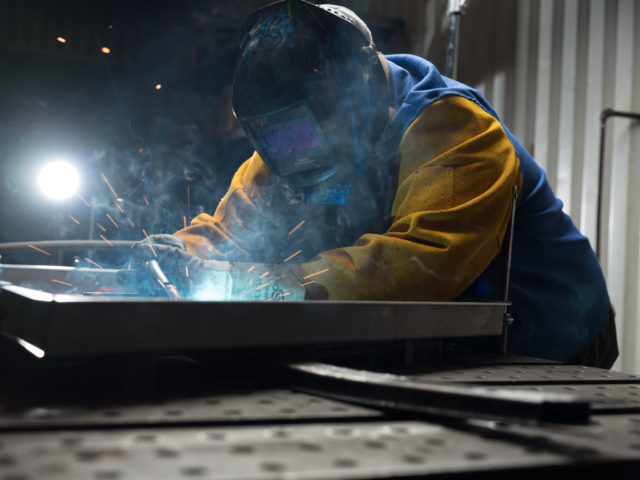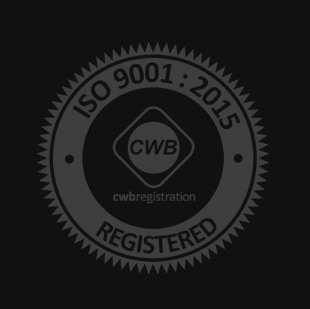Custom sheet metal fabrication is instrumental to modern industrial manufacturing processes around the globe. To some extent, nearly every industrial sector relies on customized, fabricated products derived from sheet metal materials. A metal fabrication shop will first choose from a selection of stock metals or metal alloyed materials and then shape them into custom parts with the advanced technology they have at their disposal. This includes an array of automated techniques like cutting, bending, welding, and stamping, to name a few, that are used to create customized components with precision.
Custom Sheet Metal Fabrication
Sheet metal fabrication is a process that transforms flat sheets of material into custom parts and components used in the building of products, machines, and structures. It’s a broad term that describes a number of fabrication techniques that involve either deforming the material to a desired geometric shape like stamping or bending or by selectively removing material through subtractive processes like cutting or punching. The latter reduces the material’s volume whereas the former simply reshape it without affecting the material’s volume.
Sheet metal is formed by pressing metal blocks, known as ingots, through two large rollers until the material is pressed to its desired thickness or gauge. Its thickness determines its classification as sheet metal, foil, or plate. Metal sheets measured between 0.006 and 0.25 inches thick are classified as sheet metal. Sheets of metal thinner are classified as foil and anything thicker is considered a metal plate.
Sheet metal products come from a number of familiar stock metal materials. Selection of which depends on the mechanical properties required for the product application. More common materials used are:
- Aluminum: regarded for its lightweight, strength, and durability, it performs well at lower temperatures, which accounts, in part, for its use in aerospace, automotive, HVAC, and refrigeration industries.
- Stainless Steel: regarded for its strength, durability, bio-hygienic compatibility, and corrosion resistance. Some of its more prominent applications can be found in construction and architecture, medical devices, and food and kitchen equipment.
- Brass: is lightweight and corrosion-resistant. It has useful acoustic properties but is more commonly found in fittings and related components, from door handles to hinges.
- Copper: known for its ductility, it is malleable and well-known for its electrical conductivity and corrosion resistance.
Applications for Custom Fabrication
Applications for custom sheet metal fabrication are numerous. This is due in large part to the wide selection of material for designers, engineers, and manufacturers to choose from. When designing applications, engineers select material that holds desired mechanical properties for products to function and perform as designed. Such properties as tensile strength, hardness, durability, conductivity, biocompatibility, flexibility, and corrosion resistance will determine which material is best-suited for a project.
Custom fabricated products using sheet metal are essential to industries such as:
- Automotive
- Aerospace
- Construction
- Electrical
- Electronics
- Household Appliances
- Medical
This process involves plastic deformation of metallic sheet materials to make sheet metal components for any application. Typical applications can be seen in auto parts, aircraft wings, surgical tools and instruments, panels for electronic devices, house-hold appliances like frying pans, refrigerators, ovens, dishwashers, washing machines, gas cylinders, beverage cans, cutlery, and architectural features such as flashing, roofing, and handrails.
Fabrication Technologies
Fabricating sheet metal into custom parts and components is accomplished either by forming, cutting, or joining the material or through a combination thereof. Forming reshapes material to a desired geometric shape or contour without cutting any material away. Methods of forming include bending, stretching, roll forming, and stamping. Cutting processes are many, from simple cuts with a single blade to shearing and punching, or by means of more advanced processes like laser cutting, plasma cutting, waterjet cutting, and machining with drill bits or lathe blades. Joining combines parts and components together by such processes as welding, brazing, riveting, and applying structural adhesives. Though custom fabrication processes of forming, cutting, and joining can be accomplished by hand or via mechanical means, to achieve precision and intricate cuts time and again most fabrication shops today use a variety of advanced automated technologies like CNC and robotic machines fitted with specific tooling or to control presses and brakes.
Custom sheet metal fabrication is vital in the manufacture of countless commercial, industrial, and household goods and products, parts and components, of all shapes and sizes. Sheet metal is formed from a wide range of metals and alloys which is then used for diverse applications that range from surgical instruments and saucepans to electronic components, automotive bodies, and machinery.
If you’re looking for custom metal fabrication services, please contact us at Quest-Tech today!



